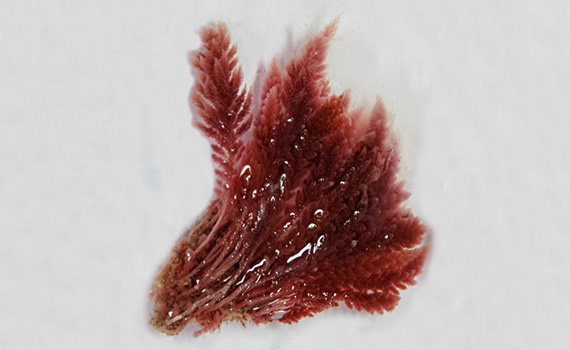
Could farming seaweed hold the key to curbing cattle methane emissions?
Methane produced from cattle farming is one of the global food-production system’s largest contributions to climate change. Could the solution come from the sea?
Josh Goldman, CEO of Australis, the world’s largest barramundi producer, certainly believes so. The firm has launched Greener Grazing, a global R&D company with the aim of developing the technology to cultivate the red seaweed Asparagopsis taxiformis in the sea at scale.
Research shows that A. taxiformis can drastically reduce methane production when introduced to cow and sheep diets,1 while seaweed aquaculture has also been shown to have a role in reducing nutrient pollution in coastal ecosystems.2
“One of the promises of seaweed farming is that a lot of things we do on land have a negative effect on the oceans. It’s a chance to remove some of the nutrients that leached into the ocean from terrestrial farming and to put that back in a circular approach,” Goldman said.
“Asparagopsis is really interesting: There’s so much leverage in that the inclusion rates in grazing-animal diets are very low. Typically, the inclusion rate is about 0.2% of daily ration to achieve an 85% reduction in methane and probably a 15% improvement in feed conversion.3 So that’s very exciting.”
An intercropping option
Although the aim of the project isn’t solely integration with fish farming specifically, it fits in with Australis’s barramundi production cycles. Fish are farmed at sites for a year before a fallowing period, during which seaweeds are grown as an intercrop.
“There are many areas where seaweed farming is permitted that marine fish farming is not, and there are other places where producers would like to make greater use of integrated intercropping systems to make use of existing infrastructure. These are all potentially viable approaches to increasing supply,” he noted.
R&D lessons from early commercial fish farming?
Three scientific teams in different locations are working on the project, with the aim of accelerating research and development.
“We’ve completed about 230 studies to date, supporting the development of methodologies to upscale biomass, induce release spores, and methods to attach those spores to substrates,” he continued.
“We have now proven all key stages of the process, so we can say it’s all possible. What we’re focused on is enhancing the consistency of each step. It’s a bit like running a marine hatchery in 1980s — when you could do it, but the survival of one batch was 3% while another was 30%.
“It’s about reducing that variability and enhancing predictability of output. There’s a lot of interest among prospective farmers globally to begin commercialization as soon as the methods have been stabilized.”
Genetic variation poses questions
Unravelling genetic and abiotic factors is key, he explained, with five global lineages of Asparagopsis believed to exist — and very different results coming with various strains.
“You can collect multiple samples from a given area and still have large differences in performance. We’ve done a lot to work through this variability and select better performing strains. It’s a very time-consuming process, both to develop the core methodologies and then fine-tune them.
“The more we’ve learned, the more we know what it will take to be successful. People write to us weekly asking ‘can you send me some spores?’ thinking that if they have seedstock they‘ll be able farm it, but that is not the case. This is an area that requires serious development, much like with marine hatcheries where the accumulation of deep knowledge is required to make it work.”
Climate concerns may bring new focus on seaweed
Seaweed is an area of aquatic production that doesn’t receive the attention or funding it should, but given the urgency of addressing climate change, Goldman is undeterred.
“Asparagopsis has a very large potential market. Arguably it’s a multi-billion-dollar opportunity and needs to be produced at large scale and will attract global capital once it’s reached a stage were commercialization is possible,” he added.
1 Kinley RD, de Nys R, Vucko MJ, Machado L, Tomkins NW. The red macroalgae asparagopsis taxiformis is a potent natural antimethanogenic that reduces methane production during in vitro fermentation with rumen fluid. Anim Prod Sci. 2016;56(3):282-9.
2 Racine P, Marley A, Froehlich HE, Gaines SD, Ladner I, MacAdam-Somer I, Bradley D. A case for seaweed aquaculture inclusion in US nutrient pollution management. Mar Policy. 2021;129:104506.
3 Roque BM, Venegas M, Kinley RD, de Nys R, Duarte TL, Yang X, Kebreab E. Red seaweed (asparagopsis taxiformis) supplementation reduces enteric methane by over 80 percent in beef steers. Plos One. 2021;16(3):e0247820.






